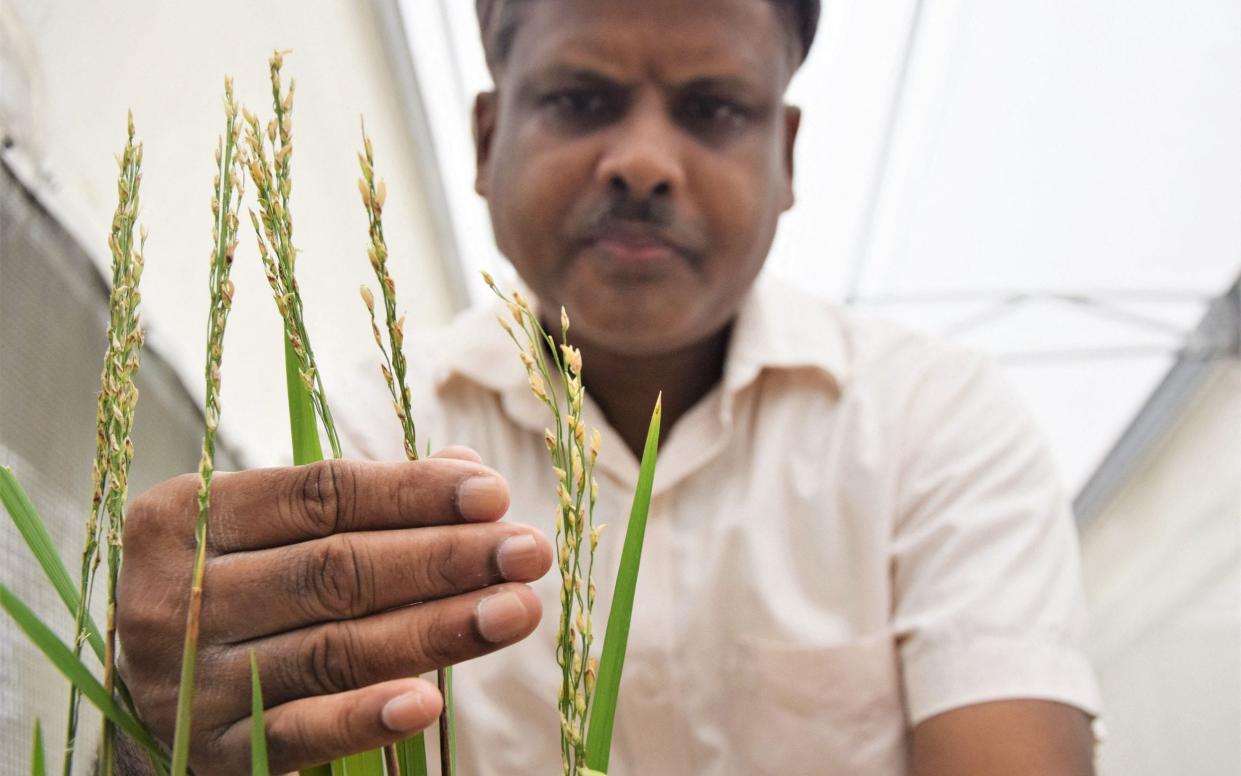Philippines becomes first country to give green light to grow enriched 'golden rice'

Nutrient-enriched “golden rice”, a major innovation in fighting malnutrition, could be on Filipino tables within just 18 months after the government became the first in the world to approve the crop.
The Philippines has given the green light for farmers to plant the rice, a genetically engineered grain containing higher levels of beta-carotene which the body converts into vitamin A.
It is hoped that the crop will have a big impact in tackling vitamin A deficiencies among the country’s poorest families. Around one in five children are affected in the Philippines, leading to weakened immune systems and causing childhood blindness in the most severe cases.
The rice also has global potential. Around 190 million children suffer from vitamin A deficiency worldwide, and in total two billion people face some form of micronutrient deficiency that can have implications for health and wellbeing. The issue is of particular urgency post-pandemic, which has pushed millions into hunger.
While there are other fortified foods, like oil and flour, and even rice products, golden rice is the first genetically engineered product on the market. It has regulatory approval from food safety bodies in Australia, New Zealand, Canada and the US, but the Philippines is the first country to back commercial cultivation. Bangladesh is also considering the step.
Dr Russell Reinke, from the International Rice Research Institute (IRRI) – which developed the rice with the Department of Agriculture-Philippine Rice Research Institute (DA-PhilRice) – said the aim was to have a major public health impact.
“We hope this will be another tool in the toolbox to combat malnutrition,” he told The Telegraph.
Rice is seen as among the best foods to modify because it is the number one staple in the world, and in some countries represents up to 75 per cent of daily calorie intake. However, in its natural state, white rice in particular is almost entirely free of nutrients.
Despite this it has taken decades to reach this point: golden rice was first conceived by Professors Ingo Potrykus and Peter Beyer in the late 1980s. It contains between 30 and 50 per cent of the recommended daily intake of vitamin A.
“Science does take quite a while,” said Dr Reinke. Genetically modified foods were also tagged as “Frankenfoods” in the 1990s, although they are more widely accepted now and offer huge potential for feeding the world, experts argue.
Golden rice itself is not one specific product, but a set of characteristics that can be combined with particular types of rice. For example, the golden rice that will be grown in the Philippines is specially designed to grow in tropical climates. Dr Reinke said it was important that it performed as well as the existing crops for it to be widely accepted.
There are other hurdles ahead though, he admitted. For example golden rice is not just a cute name; it also describes the colour, which is tinged yellow.
“So we will have to support the deployment of golden rice to educate people, make sure they know exactly what it is, so they can make informed choices about it,” said Dr Reinke. “And then there will be a degree of behavioural change, to get people used to the idea of eating a yellow rice.”
However, he said that many countries colour rice for special celebrations, so this may be an easier process than expected. He added that it was also important to make sure that the rice reaches the urban poor as well as rural communities.
The next step is to produce the rice seed at scale for farmers to plant – a process expected to take around 12 months. The crop then takes about four months to grow and, after drying and other processes, it will be ready for sale and consumption. All of these steps require careful management, Dr Reinke said.
DA-PhilRice is also working with local partners to identify where best, and how, to deploy the product among communities with the greatest levels of malnutrition and nutrient deficiency.
Dr Reinke said the regulatory approval was a step forward, backing up other approvals that showed the rice was as safe to eat as existing varieties.
He added: “I’m confident it grows in the same way, so the yield is just the same, and farmers do not need to do anything different, but it comes with the added benefit of improved nutrition.”
However, he was upfront about the challenges that remain.
“This approval is the gateway through which we had to pass before we can actually move golden rice out and have an impact,” he said. “While we should still celebrate that achievement, I’m also really mindful that now we have much more work in front of us, to have it grown, and then, ultimately, to have an impact.”
The IRRI is also developing high iron and zinc rice, with the ultimate aim of combining them with golden rice to address the multiple micronutrient deficiencies that impact two billion people worldwide.
Protect yourself and your family by learning more about Global Health Security

 Yahoo News
Yahoo News 
